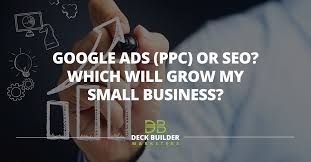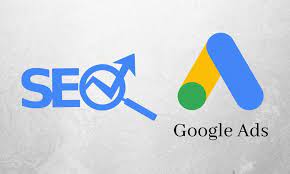Unlocking Online Success: Harnessing the Power of SEO and Google Ads
SEO vs Google Ads: Maximising Your Online Visibility
In the digital landscape, businesses strive to enhance their online visibility to attract more customers and drive revenue. Two powerful tools that can help achieve this goal are Search Engine Optimisation (SEO) and Google Ads.
SEO: Building Organic Traffic
SEO focuses on improving a website’s organic search rankings on search engine results pages (SERPs). By optimising website content, meta tags, images, and backlinks, businesses can increase their visibility for relevant search queries. SEO is a long-term strategy that requires consistent effort but can deliver sustainable results over time.
Google Ads: Instant Visibility with Paid Advertising
Google Ads, on the other hand, offers businesses the opportunity to achieve instant visibility through paid advertising. With Google Ads, businesses can create targeted ads that appear at the top of search results for specific keywords. While Google Ads provides immediate results and allows for precise targeting, it requires ongoing investment to maintain visibility.
Choosing the Right Strategy
When deciding between SEO and Google Ads, it’s essential to consider your business goals and budget. SEO is ideal for long-term growth and building a strong online presence organically. On the other hand, Google Ads can be effective for quickly driving traffic and generating leads, especially for time-sensitive promotions or campaigns.
Combining SEO and Google Ads for Maximum Impact
Many businesses find success by combining both SEO and Google Ads in their digital marketing strategy. By leveraging the strengths of each approach, businesses can maximise their online visibility and reach a broader audience. SEO lays a strong foundation for organic traffic growth, while Google Ads provides immediate exposure and targeted advertising opportunities.
Conclusion
Both SEO and Google Ads play crucial roles in enhancing online visibility and driving business growth. Understanding the differences between these two strategies and how they complement each other can help businesses create a comprehensive digital marketing plan that maximises their reach and impact in the competitive online landscape.
Understanding SEO and Google Ads: Answers to 8 Common Questions
- What is the difference between SEO and Google Ads?
- How can SEO improve my website’s visibility on search engines?
- What are the benefits of using Google Ads for online advertising?
- Is it better to invest in SEO or Google Ads for my business?
- How long does it take to see results from SEO efforts?
- What factors determine the cost of running Google Ads campaigns?
- Can I use both SEO and Google Ads together in my digital marketing strategy?
- Are there any risks associated with relying solely on Google Ads for online visibility?
What is the difference between SEO and Google Ads?
When comparing SEO and Google Ads, the main difference lies in their approach to enhancing online visibility. SEO, short for Search Engine Optimisation, focuses on improving organic search rankings through website optimisation and content creation. It is a long-term strategy that aims to attract organic traffic by targeting specific keywords and improving website authority. On the other hand, Google Ads offers businesses the opportunity to achieve immediate visibility through paid advertising. By creating targeted ads that appear at the top of search results for specific keywords, Google Ads provides instant exposure but requires ongoing investment to maintain visibility. Ultimately, while SEO builds sustainable organic traffic over time, Google Ads delivers immediate results through paid advertising campaigns.
How can SEO improve my website’s visibility on search engines?
Search Engine Optimisation (SEO) can significantly enhance your website’s visibility on search engines by implementing various strategies that align with search engine algorithms. By optimising your website’s content, meta tags, images, and backlinks, SEO helps search engines understand the relevance and authority of your site for specific keywords or phrases. This, in turn, improves your website’s ranking in search results, making it more likely to appear higher up on the page when users search for related topics. Consistent SEO efforts can increase organic traffic to your site over time, ultimately boosting your online visibility and attracting more potential customers to your business.
What are the benefits of using Google Ads for online advertising?
When considering online advertising, the benefits of using Google Ads are manifold. Google Ads offers businesses the opportunity to achieve instant visibility and reach a targeted audience through paid advertising. With Google Ads, businesses can create tailored ads that appear at the top of search results for specific keywords, increasing brand exposure and driving relevant traffic to their websites. Furthermore, Google Ads provides detailed analytics and tracking tools that allow businesses to measure the performance of their campaigns and make data-driven decisions to optimise their advertising strategies effectively. Overall, utilising Google Ads can result in increased brand awareness, lead generation, and ultimately, higher conversion rates for businesses looking to enhance their online presence.
Is it better to invest in SEO or Google Ads for my business?
When considering whether to invest in SEO or Google Ads for your business, it’s important to weigh the benefits of each strategy based on your specific goals and budget. SEO focuses on organic search rankings and long-term visibility, making it ideal for sustainable growth and building a strong online presence over time. On the other hand, Google Ads offer immediate visibility through paid advertising, allowing businesses to target specific keywords and reach their audience quickly. Ultimately, the decision between SEO and Google Ads depends on factors such as your business objectives, timeline for results, and available resources. Many businesses find success by combining both strategies to maximise their online visibility and achieve a comprehensive digital marketing approach.
How long does it take to see results from SEO efforts?
When it comes to SEO efforts, the timeline for seeing results can vary depending on various factors such as the competitiveness of keywords, website age, content quality, and backlink profile. Generally, it may take several months to start seeing significant improvements in organic search rankings and increased website traffic. SEO is a long-term strategy that requires patience and consistent effort to yield sustainable results. By implementing best practices and continuously monitoring performance, businesses can gradually see the positive impact of their SEO efforts over time.
What factors determine the cost of running Google Ads campaigns?
When considering the cost of running Google Ads campaigns, several factors come into play. The competitiveness of keywords, ad relevance, quality score, and bid strategy all influence the cost-per-click (CPC) and overall campaign expenses. Additionally, factors such as ad placement, targeting options, industry trends, and geographical location can impact the cost of running Google Ads campaigns. Understanding these factors and implementing strategic measures to optimise campaign performance can help businesses effectively manage their advertising budget while maximising the return on investment from Google Ads campaigns.
Can I use both SEO and Google Ads together in my digital marketing strategy?
Businesses often wonder whether they can incorporate both SEO and Google Ads into their digital marketing strategy. The answer is a resounding yes. By combining the power of SEO to build organic traffic over time and Google Ads for immediate visibility through paid advertising, businesses can create a comprehensive approach that maximises their online presence. Utilising both strategies allows businesses to benefit from the long-term growth potential of SEO while leveraging the instant exposure and targeted reach offered by Google Ads. This integrated approach can help businesses reach a wider audience, drive more traffic to their website, and ultimately boost their online visibility and revenue.
Are there any risks associated with relying solely on Google Ads for online visibility?
Relying solely on Google Ads for online visibility poses certain risks that businesses should be aware of. One primary concern is the dependency on paid advertising, which requires ongoing investment to maintain visibility. If a business faces budget constraints or decides to pause their advertising campaigns, they risk losing immediate visibility on search engine results pages (SERPs). Additionally, relying solely on Google Ads may limit organic growth opportunities that SEO can provide in the long term. Diversifying digital marketing strategies by incorporating SEO alongside Google Ads can help mitigate these risks and ensure a more sustainable approach to enhancing online visibility and driving business success.


